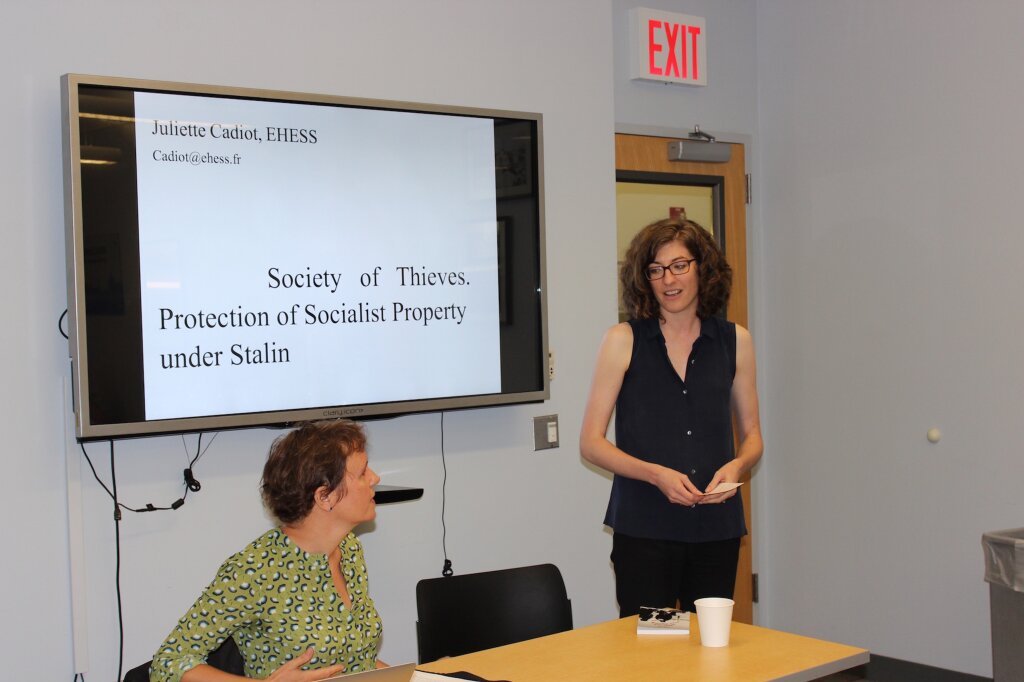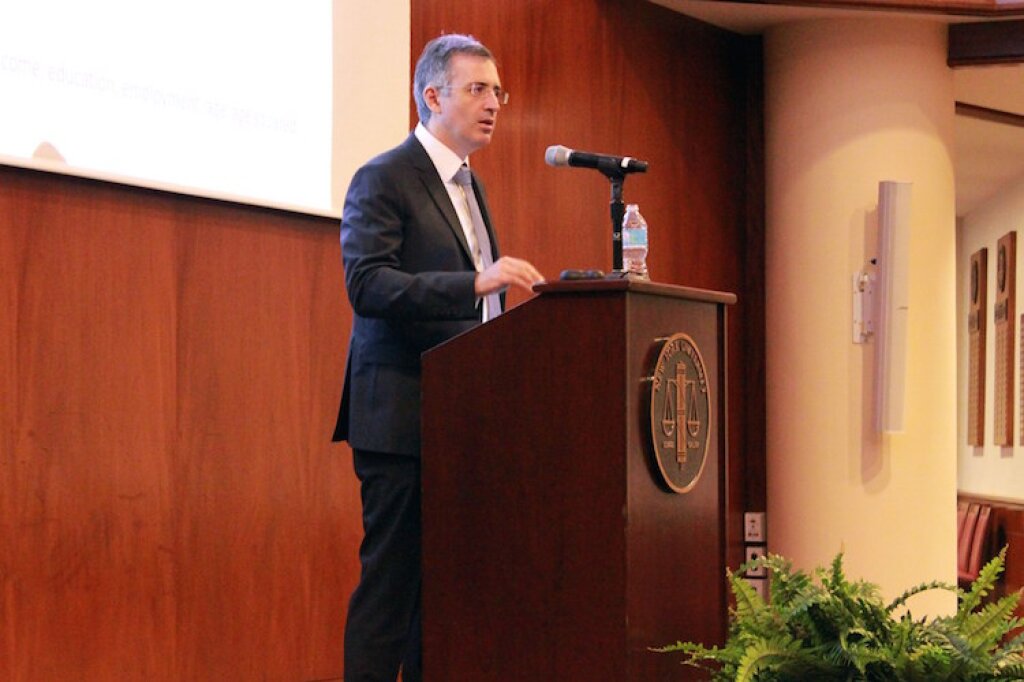On September 21st, the Jordan Center for the Advanced Study of Russia at NYU welcomed Juliette Cadiot, Professor of History at EHESS (France) with a talk titled “Society of Thieves. The Khain Case Study, Kiev 1952”. Cadiot was introduced by Anne O'Donnell, Assistant Professor of Soviet History at NYU, as the author of Le Laboratoire Impérial : Russie-URSS 1870-1940 (The Imperial Laboratory: Russia-USSR in 1870-1940) and Histoire du Goulag (The History of Gulag), both translated into Russian. She is now working on a book entitled Society of Thieves: Protection of Soviet Property Under Stalin.
Cadiot’s talk explored the subject of law enforcement of stolen Soviet property under Stalin. She argued that, although the Socialist property was proclaimed “sacred and inviolable” as of the June 4th 1947 decree, which laid very harsh punishment upon the violators, it still resulted in a failure to impose a new kind of morality. With a difference in perceiving private and public property within the Soviet society, theft of the public property didn’t hurt collective morality, but instead, according to Cadiot, was a way to make sense of the reality of deficit and a widespread means of illegal exchange. The speaker provided evidence that the Soviet government was aware of the multiple cases of embezzlement and thefts of socialist property in the post-war period, yet those crimes were still on the rise. In order to understand the motivation of the thieves, Cadiot focused on a court case labeled “The Khain affair”.
This case study followed the fate and the attempt for defense of the main protagonists, accused of embezzlement in Kiev’s textile industry in November 1951. “The mastermind of the criminal scheme” - Khanan Aronovich Khain –made his way to the top from a small Jewish settlement. Since he took over the textile base in 1943, Khain was often referred to as the “master” (“khoziain”), also in terms of protector, since he was a very networked entrepreneur with political connections, which he used to protect his accomplices. Cadiot cited court documents as evidence of bribery of the government officials, fraud with raw materials and fabrics, price speculations, and an extensive system of mutual dependence, that were performed by Khain’s cartel.
Khain didn’t hide his activities, suggesting that he had a strong “krysha” – a protective network within the higher ranks of the police, MGB (secret services), and judicial system. As the court case unraveled, Khain turned in several prosecutors as being his accomplices, two of whom were convicted alongside the cartel. Cadiot pointed out that Khain defended himself against the charges of wrongdoing, claiming that he was seeking to expand the textile base’s activities and commercial success. He only recognized his fault during trial.
It is noteworthy that other members of the cartel accused of the same charges - Abramov, Iarochevsky, Gerzon, Grushko, and Teplitsky – were all Jews. This indicated, according to Cadiot, that the Soviets understood criminal activity as a “form of ethnic atavism”. Also, the fact that the charges pressed against Khain were those of treason, rather than theft, supports a hypothesis of a political trial and “Jewish scapegoats” used by the authorities to explain millions of rubles of losses and the rampant deficit. The case indeed received an appeal in 1955 as a political trial, but the camp sentences weren’t cancelled.
After the speaker concluded, James Heinzen, Professor of History at Rowan University, took the floor to provide comments and engage a session of questions and answers. He added to Cadiot’s talk by suggesting that informal relationships can soften the edges of authoritarian regime by remaining outside of its scope of control. He then asked the speaker about the lessons learned from Khain’s case, with regards to the “parallel society” – a gap between the official account of the events and what actually happened. Professor Cadiot responded that, firstly, public property was never taken seriously but rather served as an instrument to undermine the regime, and secondly, the Khain case displayed the weakness of the Soviet judicial system and the strength of the MGB, or, as put in Khain’s words, “only MGB can put me into jail”. She then added that it could be very insightful to examine the relationship between people and public property in present day China.



